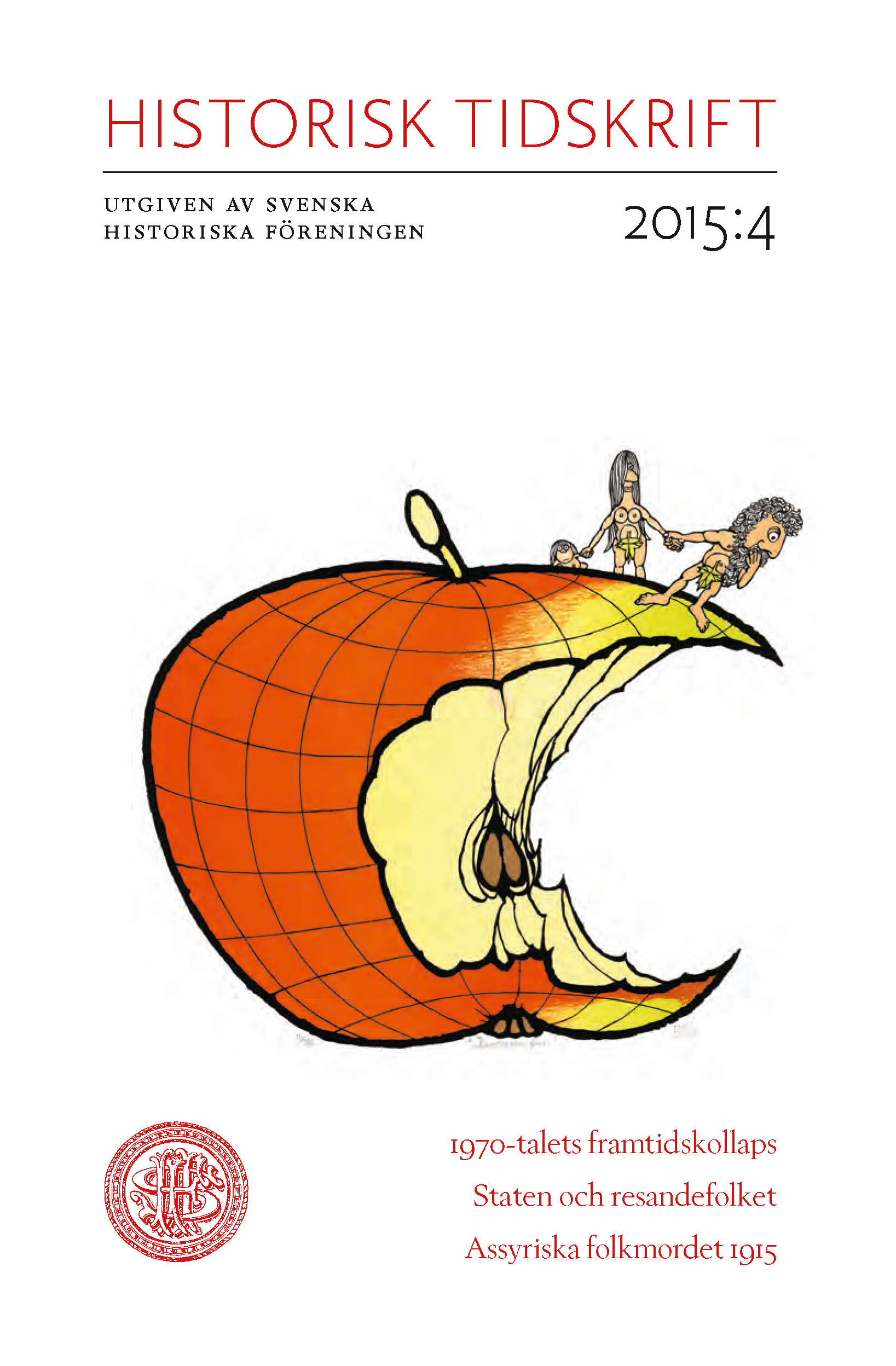Abstract
Knowledge of the future in circulation. Gösta Ehrensvärd’s diagnosis and the Swedish futures debate, 1971–1972
This article examines how knowledge of an impending collapse of modern industrial civilization circulated in Swedish society during the early 1970s. The point of departure is the Swedish biochemist Gösta Ehrensvärd’s (1910–1980) short book Före – efter: En diagnos (Before – After: A Diagnosis). In this book Ehrensvärd argued that the technologically advanced societies of the early 1970s would soon become historical parentheses. According to his calculations, which centered on rapid population growth and dwindling natural resources, a global breakdown would likely occur sometime around 2050. He predicted that global collapse would be followed by centuries of mass starvation and political turmoil, after which a considerably reduced mankind would be able to build up a new and stable agrarian civilization. Ehrensvärd’s book became an unexpected bestseller in Sweden, selling over 100 000 copies and going through seven editions in its first year. This study examines where, when and how the knowledge Ehrensvärd produced was picked up by Swedish media and how circulation in the media shaped this knowledge in new and unpredictable ways. The main analytical concept, ”knowledge circulation”, is derived from the burgeoning field of Wissensgeschichte and the study seeks to show the concept’s empirical usefulness and contribute to its refinement. By analysing how the knowledge Ehrensvärd produced circulated the article demonstrates that it went through different phases and hence that, from a societal perspective, this knowledge changed substantially over time. Initially Ehrensvärd’s predictions for the future were regarded as new and important knowledge. But when the physicist Tor Ragnar Gerholm in February 1972 published a rosy alternative vision of the future Ehrensvärd’s diagnosis was increasingly viewed as a pessimistic alternative. In the public debate that followed Ehrensvärd was repeatedly labeled a ”doomsday prophet” and ”pessimist”. The negative labels stuck, even though most participants in the debate, as well as Sweden’s Social Democratic establishment, sided with Ehrensvärd rather than Gerholm. The study thus shows that knowledge in circulation is apt to change. Even though Före – efter: En diagnos was the same book in April 1972 as it had been in November 1971 – the knowledge it symbolized when it circulated in Swedish society was markedly different. Discursive analyses of books are therefore not enough if we are to understand the history of knowledge in society.

